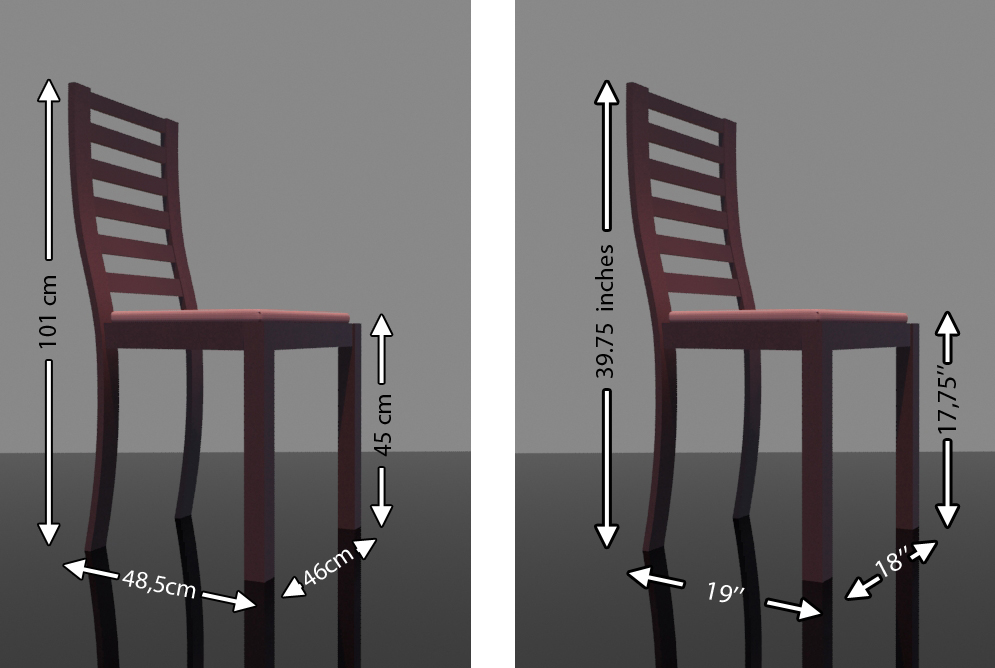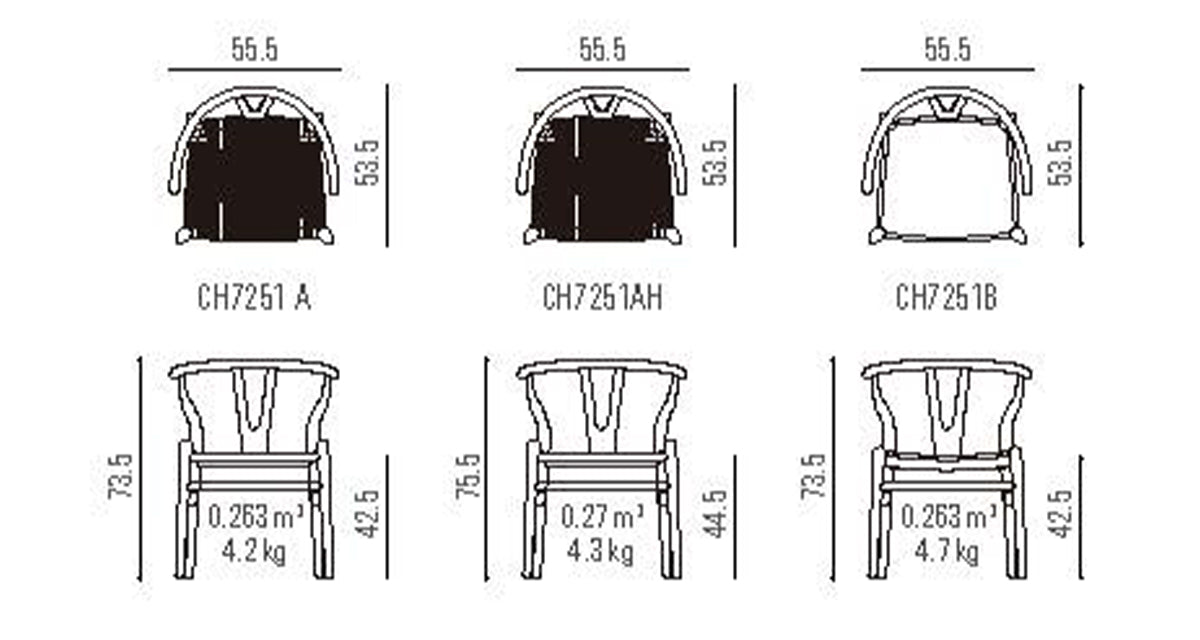Standard Dining Chair Dimensions

Dining chairs are an essential part of any dining room, providing comfort and functionality during meals. Understanding standard dining chair dimensions is crucial for creating a harmonious and functional dining space. These dimensions ensure proper seating posture, adequate legroom, and compatibility with dining tables.
Standard Dining Chair Dimensions
The standard dimensions for dining chairs vary depending on the chair’s style, purpose, and intended use. Here’s a table outlining the standard dimensions for various types of dining chairs:
| Chair Type | Seat Height (inches) | Seat Depth (inches) | Seat Width (inches) | Back Height (inches) | Overall Height (inches) | Armrest Height (inches) |
|---|---|---|---|---|---|---|
| Standard Dining Chair | 18-20 | 16-18 | 18-20 | 36-40 | 38-42 | – |
| Side Chair | 18-20 | 16-18 | 18-20 | 36-40 | 38-42 | – |
| Armchair | 18-20 | 16-18 | 20-22 | 36-40 | 38-42 | 26-28 |
| Counter Stool | 24-26 | 16-18 | 18-20 | 36-40 | 38-42 | – |
| Bar Stool | 30-32 | 16-18 | 18-20 | 36-40 | 40-44 | – |
Factors Influencing Standard Dining Chair Dimensions
Several factors influence the standard dimensions of dining chairs, ensuring comfort, functionality, and aesthetic appeal.
Ergonomics
Ergonomics plays a crucial role in designing comfortable and functional dining chairs. The seat height, depth, and back height are carefully considered to promote good posture and prevent discomfort during extended sitting.
A comfortable seat height allows for proper leg positioning, ensuring that the feet are flat on the floor and the thighs are parallel to the ground.
The seat depth should be adequate to support the back and prevent the user from sliding forward.
The back height should provide adequate support for the spine and prevent slouching.
Comfort
Comfort is paramount when choosing dining chairs. The seat cushion should be soft and supportive, providing adequate padding for prolonged sitting.
The back should also be contoured to provide support for the lumbar region and prevent back pain.
Table Height
The height of the dining table significantly influences the ideal seat height of the chairs. The seat height should be slightly lower than the table height, allowing for comfortable elbow positioning and a relaxed dining experience.
Standard table heights vary, with dining tables typically ranging from 28 to 30 inches in height.
Dining Style
The dining style also influences the choice of chair dimensions. Formal dining settings often feature chairs with higher backs and more elaborate designs, while casual dining spaces may opt for chairs with lower backs and simpler designs.
The overall design of the chair should complement the style of the dining table and the surrounding decor.
Comparing Dining Chair Dimensions Across Manufacturers
Dining chair dimensions can vary slightly across different manufacturers.
For example, a standard dining chair from one manufacturer might have a seat height of 18 inches, while a similar chair from another manufacturer might have a seat height of 19 inches.
It’s essential to compare dimensions from different manufacturers to find chairs that best fit your needs and preferences.
Impact of Dimensions on Comfort and Functionality

The dimensions of a dining chair play a crucial role in determining its comfort and functionality. A well-designed chair ensures proper posture, adequate legroom, and optimal support, enhancing the dining experience.
Seat Height and Posture
The seat height of a dining chair directly affects posture during dining. A chair that is too low forces you to slouch, while a chair that is too high puts strain on your back. The ideal seat height allows you to sit with your feet flat on the floor, your knees bent at a 90-degree angle, and your back straight. This posture promotes good circulation and reduces strain on the spine.
Seat Depth and Legroom
Seat depth is another critical factor in determining comfort and functionality. A seat that is too short can cause discomfort in the thighs and legs, while a seat that is too deep can lead to slouching and lack of support. The ideal seat depth should allow for adequate legroom while providing sufficient back support.
The recommended seat depth is typically between 16 and 18 inches, but this can vary depending on individual height and leg length.
Back Height and Lumbar Support
The back height of a dining chair provides crucial lumbar support. A chair with adequate back height ensures that your lower back is properly supported, reducing strain and discomfort during prolonged sitting. The ideal back height should extend to the mid-back, providing support for the natural curve of the spine.
A chair with a backrest that is too low can lead to lower back pain, while a backrest that is too high can restrict movement and make it difficult to get up.
Armrest Height and Seating Posture, Standard dining chair dimensions
Armrest height significantly influences seating posture and accessibility. Armrests that are too high can restrict movement and make it difficult to get in and out of the chair. Armrests that are too low can put pressure on the elbows and wrists, leading to discomfort.
The ideal armrest height should allow for comfortable arm placement while maintaining a relaxed posture.
Ideal Dining Chair Dimensions for Different User Heights
The following table illustrates the ideal dining chair dimensions for different user heights:
| User Height (inches) | Seat Height (inches) | Seat Depth (inches) | Back Height (inches) | Armrest Height (inches) |
|—|—|—|—|—|
| 5’4″ | 17.5 | 16.5 | 19.5 | 25 |
| 5’7″ | 18.5 | 17.5 | 20.5 | 26 |
| 6’0″ | 19.5 | 18.5 | 21.5 | 27 |
These dimensions are general guidelines, and individual preferences may vary. It’s important to consider factors such as body shape, personal comfort, and the specific dining table height when selecting a dining chair.
Choosing the Right Dimensions for Your Space

Choosing the right dining chair dimensions is crucial for creating a comfortable and functional dining space. You want your chairs to fit comfortably around your table, leaving enough room for movement and preventing any awkward collisions. But you also need to consider the overall layout of your dining room and how the chairs will interact with other furniture and traffic flow.
Factors to Consider When Choosing Dining Chair Dimensions
It’s important to consider several factors when choosing dining chair dimensions for your dining room. These factors include the size of your table, the layout of your room, the amount of foot traffic, and your personal preferences.
- Table Size: The size of your table will dictate how many chairs you can comfortably fit around it. A larger table will accommodate more chairs, while a smaller table will require smaller chairs to avoid overcrowding.
- Room Layout: The layout of your dining room will affect how much space you have for chairs and how they will be positioned. A smaller dining room may require you to choose chairs with a smaller footprint to maximize seating capacity.
- Foot Traffic: If your dining room is a high-traffic area, you will need to choose chairs that are easy to move and won’t obstruct foot traffic. Chairs with a smaller footprint or casters can help to reduce the chances of bumping into them.
- Personal Preferences: Ultimately, the most important factor is your personal preference. Choose chairs that you find comfortable and that fit your style. Consider factors like seat height, backrest height, and the overall size and shape of the chair.
Measuring Your Dining Space
Measuring your dining space is essential for choosing the right dining chair dimensions. Here is a step-by-step guide:
- Measure the Table: Measure the length and width of your dining table. This will help you determine the amount of space you have available for chairs.
- Measure the Room: Measure the length and width of your dining room. This will help you determine how much space you have available for chairs and how they will be positioned.
- Measure the Distance Between the Table and Walls: Measure the distance between the table and the walls. This will help you determine how much space you have for chairs and how they will be positioned.
- Measure the Distance Between the Table and Other Furniture: Measure the distance between the table and other furniture in your dining room. This will help you determine how much space you have for chairs and how they will be positioned.
Maximizing Seating Capacity and Comfort
With careful planning, you can maximize seating capacity and create a comfortable dining experience.
- Choose Chairs with a Smaller Footprint: If you have limited space, choose chairs with a smaller footprint. This will allow you to fit more chairs around your table.
- Consider Chairs with Casters: Chairs with casters are easy to move and can be easily repositioned to accommodate different seating arrangements. This is especially helpful if your dining room is a high-traffic area.
- Leave Enough Space for Movement: Ensure that there is enough space between chairs for people to move comfortably. A general rule of thumb is to allow at least 24 inches of space between chairs.
- Choose Chairs with Comfortable Seat Cushions: Comfortable seat cushions are essential for a pleasant dining experience. Choose chairs with thick, supportive cushions that will provide adequate comfort for extended periods.
- Choose Chairs with Backrests: Backrests can provide support and comfort for your back, especially if you are dining for extended periods. Choose chairs with backrests that are the right height for your body.
Standard dining chair dimensions – The standard dining chair, a ubiquitous fixture in our homes, often sits unassumingly, its dimensions a well-worn formula. Yet, beyond the familiar, there lies a world of design, as exemplified by the studio designs riviera drafting office chair black , a chair that transcends the ordinary.
This drafting chair, with its unique blend of functionality and style, reminds us that even the seemingly mundane can hold hidden artistry, much like the carefully crafted dimensions of a standard dining chair.
While standard dining chair dimensions cater to the practical, a parlay black leather lounge chair speaks to a different kind of comfort, a luxurious embrace for the weary soul. Perhaps, then, the perfect dining chair finds a balance between function and form, offering both a place to rest and a touch of elegance.
